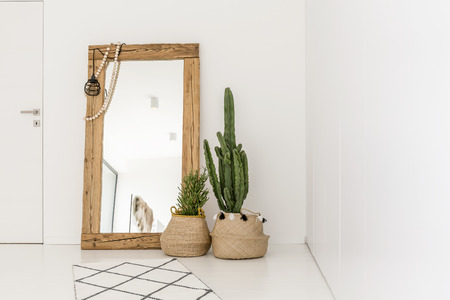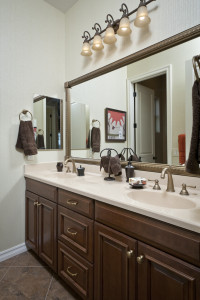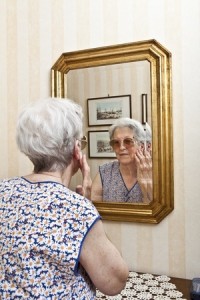
Are you searching for an easy but dramatic way to add more style to your home? If so, try decorating with mirrors. In fact, using mirrors in a space has several aesthetic benefits. It visually expands the room, making it seem bigger, and it can also create special effects. Today, we are going to share some designer secrets for tastefully using mirrors in your home’s decor. Let’s take a look!
Be Creative
When decorating with mirrors, think of this accessory as a decorative window that you can strategically place in a room to reflect any view. Mirrors can create special effects when you place it on your favorite piece of artwork, and the light reflects and emphasizes the different colors found throughout the artwork. According to design experts, there are generally no rules when it comes to decorating with mirrors. That means you can place them anywhere you want in the room.
Create a Dramatic Effect
Use mirrors to create a dramatic effect in a room with little design elements. A large floor length mirror in smaller spaces can totally transform the room. For instance, a framed floor length mirror propped against the wall in your bedroom or even at the end of the hallway can be a great design asset.
Multiple Mirrors
You do not have to stick to just one mirror in the room. In fact, you can never have too many mirrors. Get creative and hang multiple mirrors on one wall. Whether big or small, they should all be proportionate to each other, and they should be scaled based on the size of the wall. For instance, if you are working with an expansive wall, you do not want to use small mirrors. Instead, you should opt for larger mirrors that flatter the size of the wall. Additionally, when installing multiple mirrors on a wall, be sure to group them like artwork so that they are more visually appealing.
Mirror Hotspots
Although you can use mirrors in any room of the house, there are certain areas that will especially benefit from a few well-placed mirrors. The entryway is a great place to place a mirror. Also, the dining area is another great place to use mirrors. When combined with chandelier lighting and candles, mirrors will create the perfect ambiance in any space.
How do you incorporate mirrors in your design? Do you currently use any of these expert tips? If so, we would love to hear your thoughts below in the comment section.

 Mirrors have more versatility than almost any other type of furniture. They can be functional, decorative, light enhancers and space enhancers.
Mirrors have more versatility than almost any other type of furniture. They can be functional, decorative, light enhancers and space enhancers. 